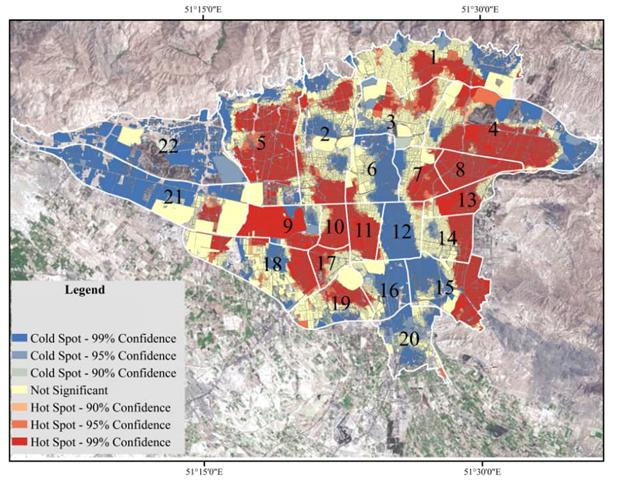
Credit: Amir Reza Khavarian-Garmsir, Ayyoob Sharifi & Nabi Moradpour
A person who owns a car or who has a college education may be less vulnerable to COVID-19, according to an analysis of cases in Tehran, Iran, one of the early epicenters of the pandemic. While such variables do not inherently lower a person’s risk, they do indicate an infrastructure of protection that persists despite how densely populated a person’s district might be.
The international collaboration published their results on April 3 in Sustainable Cities and Society.
“In the past few decades, there have been various efforts aimed at increasing urban density to enhance efficiency and contribute to climate change mitigation — but the COVID-19 pandemic has brought questions about the desirability of compact urban development to the forefront,” said paper author Ayyoob Sharifi, associate professor in the Graduate School of Humanities and Social Sciences and in the Graduate School of Advanced Science and Engineering at Hiroshima University. Sharifi is also affiliated with the Network for Education and Research on Peace and Sustainability.
Through a comprehensive data analysis from the early months of the pandemic (to April 4 and June 27, 2020), the researchers found that a population’s demographic structure — age, social and economic class, access to resources — is far more influential than simply how dense a population is. However, density is distinctly different than overcrowding for the resources available, the researchers said.
“We found that what drives the spread of infectious disease during a pandemic is overcrowding, which can occur in districts even with low density,” said paper author Amir Reza Khavarian-Garmsir, assistant professor in the Department of Geography and Urban Planning in the Faculty of Geographical Sciences and Planning at the University of Isfahan.
While a person less likely to be aware of or follow public health guidelines or more likely to use public transportation may be more at risk for the disease, the researchers didn’t find a statistically significant difference in urban districts with lower income and lower age compositions–indicating that age was one of the most significant risk factors for COVID-19 infection, despite density of living.
The data was obtained from Iran’s AC-19 app, which tracks positive cases and deaths by geographic location, the researchers assessed whether certain variables affected infection rates across the 22 districts and roughly 8.6 million residents of Tehran. They used structural equation modeling, which can use multiple factors to indicate the influence of unobservable variables, such as likelihood to follow public health recommendations, in combination with measurable factors, such as ease of access to medical facilities.
There are some drawbacks to the study, the researchers said, the main one of which is data availability and accuracy. The pandemic evolved so rapidly in the early months that tracking may not capture the full picture; and testing shortages and cost, as well as a relative lack of severe symptoms in children and young adults, may skew the number of true positive cases.
“It is perhaps too early to draw definitive conclusions, so future research should continue to investigate the relationship between urban density and transmission patterns of infectious disease,” Moradpour said.
The researchers said they hope their work will help policy makers develop guidelines to benefit all during urban and pandemic-preparedness planning.
“The next step is to further examine the impacts of urban density in other contexts,” Shafiri said. “In addition, we are trying to examine the long-term impacts of the pandemic on compact urban development policies.”
###
About Hiroshima University
Since its foundation in 1949, Hiroshima University has striven to become one of the most prominent and comprehensive universities in Japan for the promotion and development of scholarship and education. Consisting of 12 schools for undergraduate level and 4 graduate schools, ranging from natural sciences to humanities and social sciences, the university has grown into one of the most distinguished comprehensive research universities in Japan. English website: https:/
Media Contact
Norifumi Miyokawa
[email protected]
Related Journal Article
http://dx.




